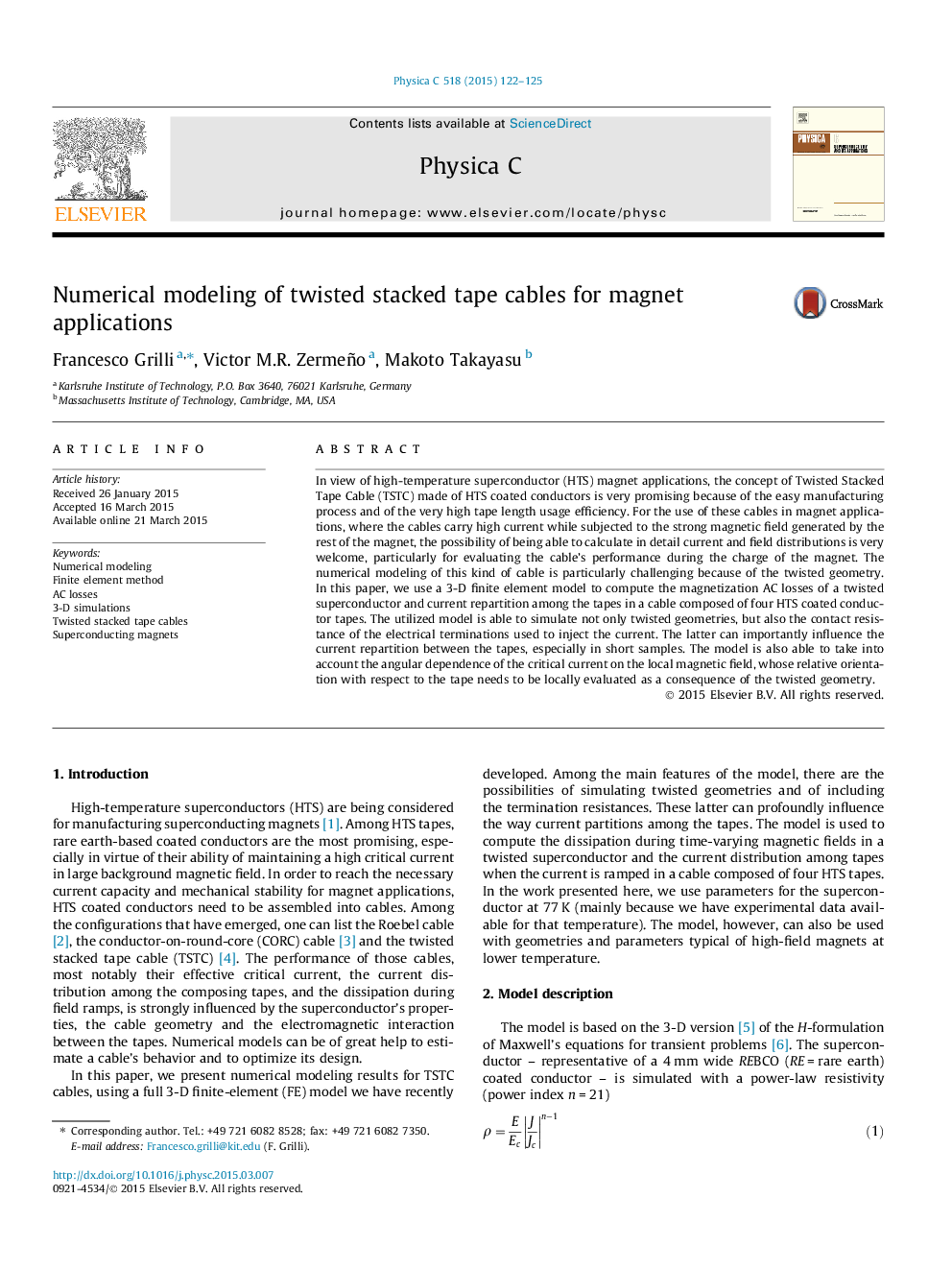| Article ID | Journal | Published Year | Pages | File Type |
|---|---|---|---|---|
| 1817512 | Physica C: Superconductivity and its Applications | 2015 | 4 Pages |
•Twisted conductors are modeled with FE-model that includes angular Jc(B) dependence.•3-D mesh preserves exactly the same mesh along the superconductor’s length.•AC losses are calculated both with full 3D simulations and with a series of 2D simulations.•The two approaches give identical loss results, but the 2D approach is much faster.
In view of high-temperature superconductor (HTS) magnet applications, the concept of Twisted Stacked Tape Cable (TSTC) made of HTS coated conductors is very promising because of the easy manufacturing process and of the very high tape length usage efficiency. For the use of these cables in magnet applications, where the cables carry high current while subjected to the strong magnetic field generated by the rest of the magnet, the possibility of being able to calculate in detail current and field distributions is very welcome, particularly for evaluating the cable’s performance during the charge of the magnet. The numerical modeling of this kind of cable is particularly challenging because of the twisted geometry. In this paper, we use a 3-D finite element model to compute the magnetization AC losses of a twisted superconductor and current repartition among the tapes in a cable composed of four HTS coated conductor tapes. The utilized model is able to simulate not only twisted geometries, but also the contact resistance of the electrical terminations used to inject the current. The latter can importantly influence the current repartition between the tapes, especially in short samples. The model is also able to take into account the angular dependence of the critical current on the local magnetic field, whose relative orientation with respect to the tape needs to be locally evaluated as a consequence of the twisted geometry.
